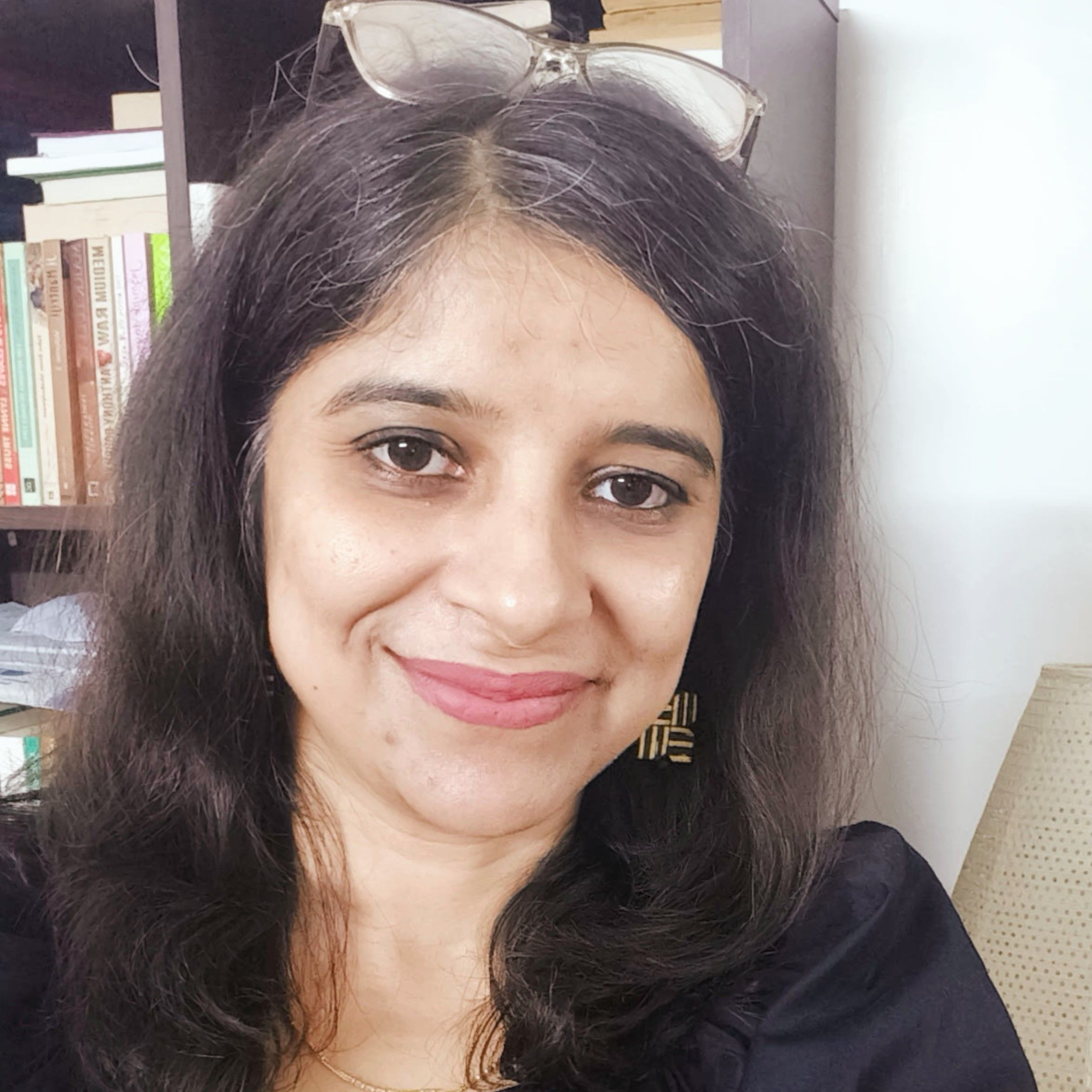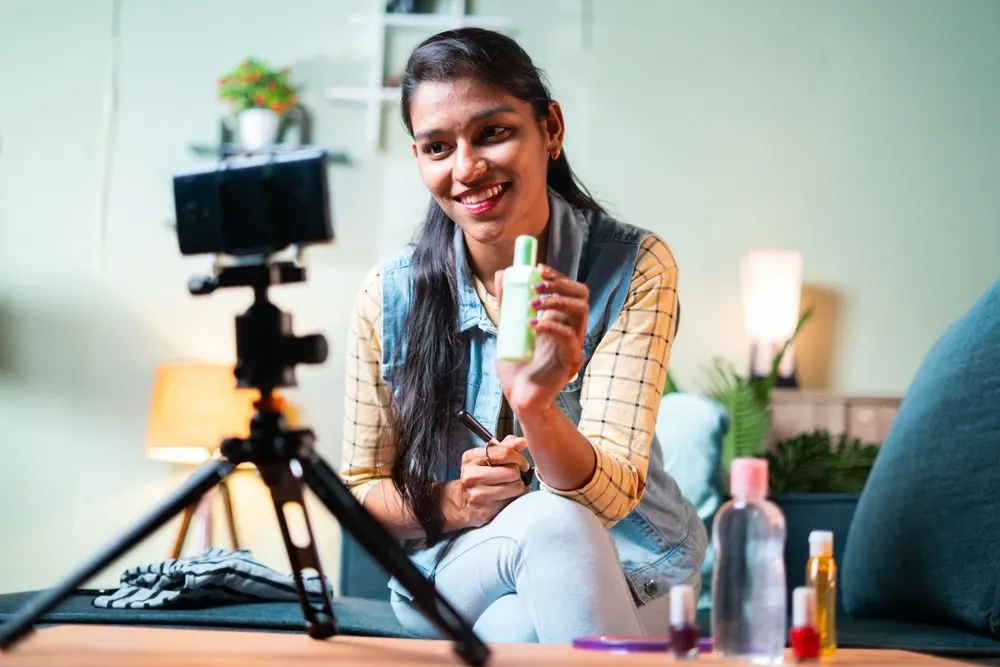Upstox Originals
Micro-influencers and brands: Fueling India's creator economy boom

6 min read | Updated on May 09, 2025, 16:23 IST
SUMMARY
India's booming creator economy, recognised as the "orange economy," is driven by accessible internet, platforms, and changing consumption habits. Micro-influencers are key, monetising through brand partnerships and innovative methods like live commerce and subscriptions. Brands increasingly leverage creators for marketing, impacting billions in spending.

According to a BCG report, creators are now a significant force in consumer decisions, influencing $350–400 billion in current spending. | Image: Shutterstock
Zakwan Sheikh is a Mumbai-based vlogger who has 11,000 followers on Instagram. He started posting casual vlogs on the platform around three years ago and soon acquired a strong community of followers. Be it capturing a rainy moment in Mumbai or showcasing a slice-of-life situation, Zakwan knows the pulse of his followers and creates content that strikes a chord. What’s more, what began as a casual hobby is now one of his many income sources. Zakwan runs a disposable container business, two Chinese food outlets and is now an Instagram influencer. Seeing his follower base, small local brands have approached him to review their products. He earns around ₹60,000 to ₹70,000 every month from brand promotions on Instagram.
Zakwan is one of around 2.5 million monetised content creators in India. These micro influencers are earning through brand partnerships and live commerce. While brand partnerships and the interactive experience of live commerce offer opportunities, the monetisation playbook is expanding rapidly. From virtual gifts to the sustained support of subscription models and the direct engagement of thriving communities, the income potential for creators is becoming increasingly varied and robust.
India’s ‘Orange Economy’
Former Colombian President Iván Duque Márquez and former Culture Minister Felipe Buitrago introduced the "orange economy" concept, drawing on the colour's symbolic presence in creative, religious and cultural contexts. Simply put, the ‘orange economy’ is the creative economy that covers all economic activities driven by art, culture, media, innovation and intellectual property.
India's creator economy took centre stage at the inaugural World Audio Visual and Entertainment Summit (WAVES) held in Mumbai recently when Prime Minister Narendra Modi urged young creators to "drive the nation's Orange Economy forward," recognising their work as a catalyst for a new creative wave.
India's digital landscape is buzzing with a massive surge in content creation, boasting active digital creators who have each cultivated a following of over 1,000. In fact, Creators, Brands and Platforms are driving the creator economy.
According to a BCG report, creators are now a significant force in consumer decisions, influencing $350–400 billion in current spending. With advancements in digital infrastructure and the prevalence of short-form video, creators are evolving beyond entertainment to become crucial nodes in the marketing-to-commerce funnel. This shift will not only transform business-to-consumer interactions but also generate $100–125 billion in ecosystem income within the next five years.
The driving forces behind the growth
Rural India is set to propel internet users to over 900 million in 2025, according to a report by IAMAI and Kantar. This is proof of deeper internet penetration in the country, especially in rural India. The reason is improved access to affordable devices and connectivity. This has empowered creators to reach a wider audience base.
Social media platforms are making it easier for content creators to innovate and create both long-form and short-form content. Platforms like Facebook, Instagram, and YouTube offer a space for content to be shared and audiences to connect. A variety of graphic design, video editing and social media management tools are readily available for creators.
Moreover, consumption patterns are changing. The younger demographic is interested in bite-sized online content. They are drawn to user-generated entertaining content that can be shared.
There is also a certain need for independence and alternative income streams, which has motivated the younger generation to create their own content.
The rise of new creators can also partly be attributed to the COVID-19 pandemic. It accelerated the adoption of online content, and everyone became an online creator.
The vernacular wave
Regional content creators are the next big thing. India is home to 2-2.5 million monetised creators, most of whom are not in big cities. They belong to tier 2 and 3 towns and create videos in local languages, keeping their culture and local flavour alive. Regional creators boast of loyal communities that are growing by the minute. Some YouTube channels like ‘Lobhasis Kitchen Marathi’, a Marathi cooking channel which shares the culinary traditions of Maharashtra, have taken off with nearly 62,000 subscribers. The best part is that creators don’t need millions of followers to succeed. Despite having only a few thousand followers, nano and micro-influencers are already generating income through avenues like brand partnerships, live commerce, virtual gifting, and direct community support.
What are viewers watching?
In verticals like fashion, entertainment, beauty, and personal care, over 70% of consumers have encountered creator content, with approximately one in five purchases directly influenced by it. Other sectors like finance, home décor, and wellness are catching up.
Comedy, movies and daily soaps are the top three genres of entertainment in India. Quality of content, relevance and variety of content are the top 3 criteria for viewers to choose a platform. But in all this, creator-driven content takes centre stage.
Brands love influencers
About 70% of the brands are expecting to increase their creator budgets by 1.5 to 3x over the next 2-3 years. Brands that do influencer marketing spend between 10% and 20% of their marketing budgets on the creator economy today. ‘Relatability’ and ‘content fit with target audience’ are the most important characteristics brands look for when designing a creator-led campaign.
Some brands have managed to ace the influencer-marketing concept. One of them is Sugar Cosmetics. Recognising the nascent power of short-form video, this cosmetics brand strategically integrated it into its influencer marketing. By partnering with influencers who championed diverse beauty perspectives through makeup tutorials, their campaign became a success, reaching 4.3 million across social media and still drawing two million monthly visits. Brands like Nykaa, Lenskart and Unacademy have tied up with celebrities as well as micro influencers to speak about their products and services. The key is to sustain authenticity and gain the trust of the consumers.
The flip side
While India boasts a large creator community, effective monetisation remains a challenge for many, with only 8–10% achieving it. A significant portion, primarily nano and micro-influencers, earn less than ₹18,000 per month. This contrasts with more developed markets like the US and Brazil, where higher per capita content consumption and larger paying user bases drive stronger monetisation rates. There are additional challenges like inconsistent income, limited training resources, and discoverability problems, which are key hurdles, particularly for smaller creators. There are many unexplored means of content monetisation that creators have yet to tap.
What lies ahead
About 90% of creator revenues today are still brand-funded, and this needs to change in the future to commerce-led and community-led models of revenue.
Generative AI is emerging as a potent accelerator for content creation and campaign scalability. It’s enabling creators and brands to iterate rapidly and personalise deeply. However, authenticity remains paramount alongside this technological advancement and expanded reach. To thrive, brands should re-evaluate content cycles, adopt co-creation models, and cultivate internal expertise in the creator ecosystem, particularly in measuring ROI, navigating regulations, and fostering real-time engagement.
With India projected to have over 1.3 billion internet users by 2030 and creator influence permeating all consumer segments, this might easily be called the ‘new era of marketing’.
By signing up you agree to Upstox’s Terms & Conditions
About The Author
Next Story
